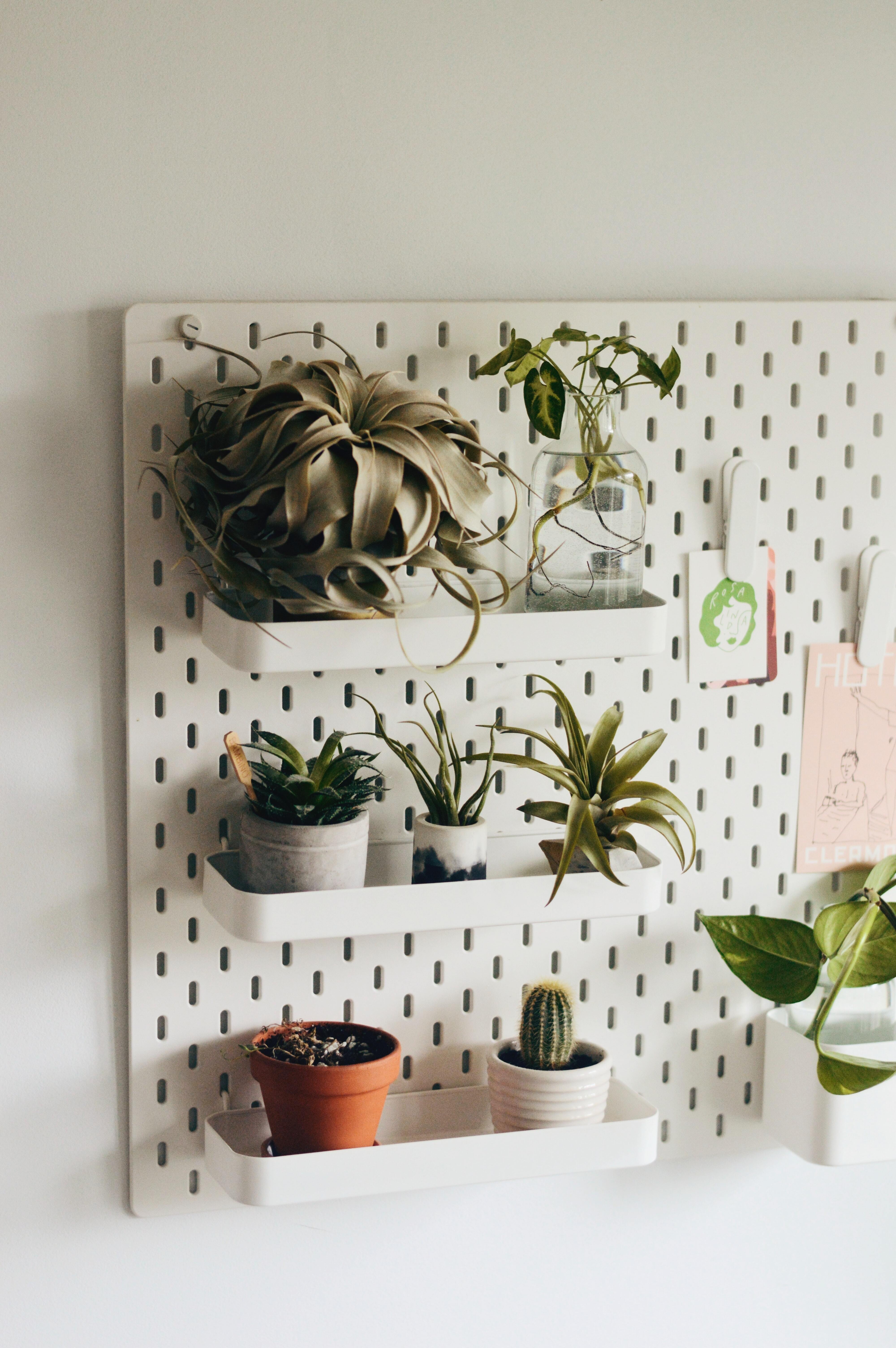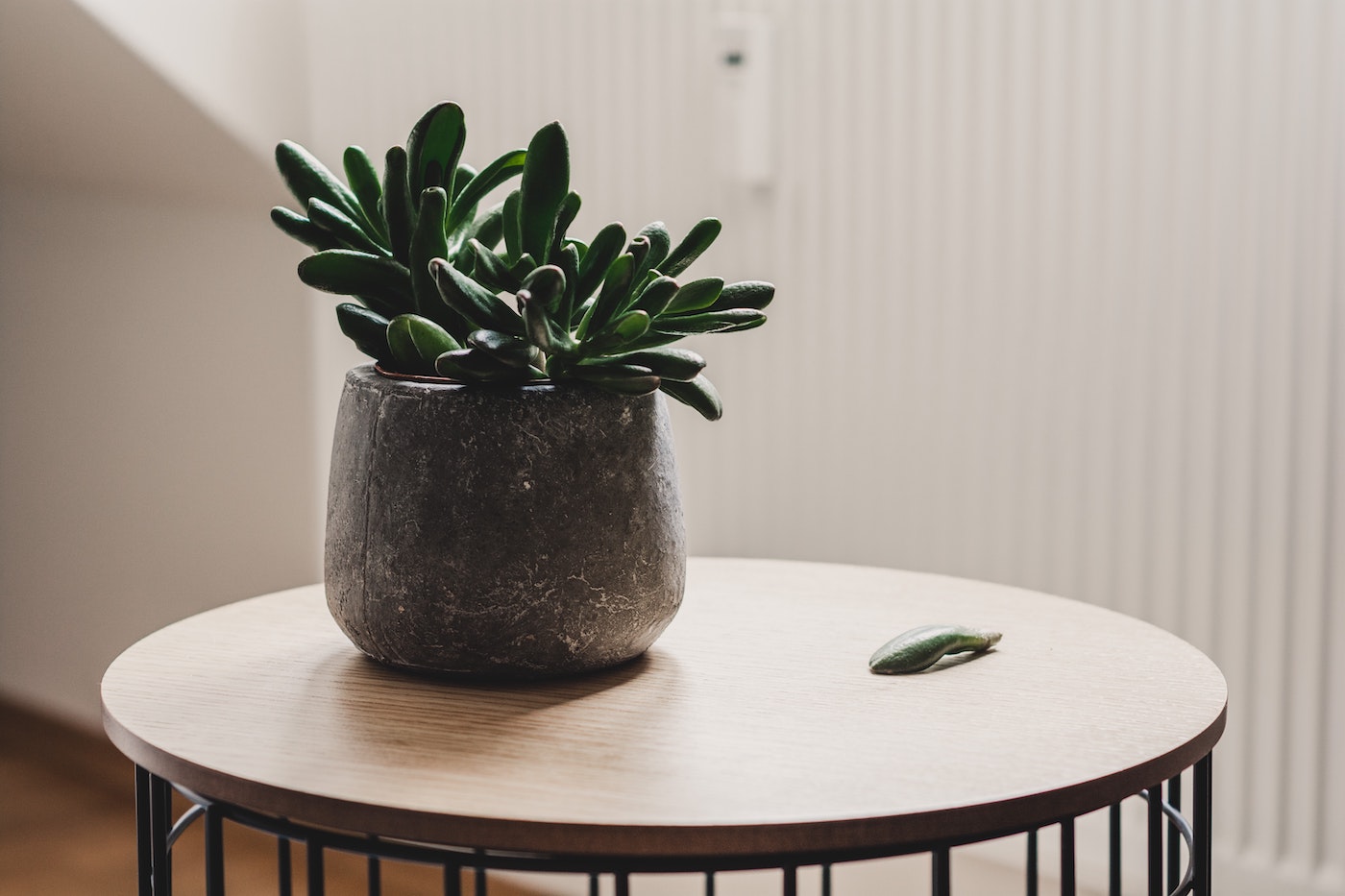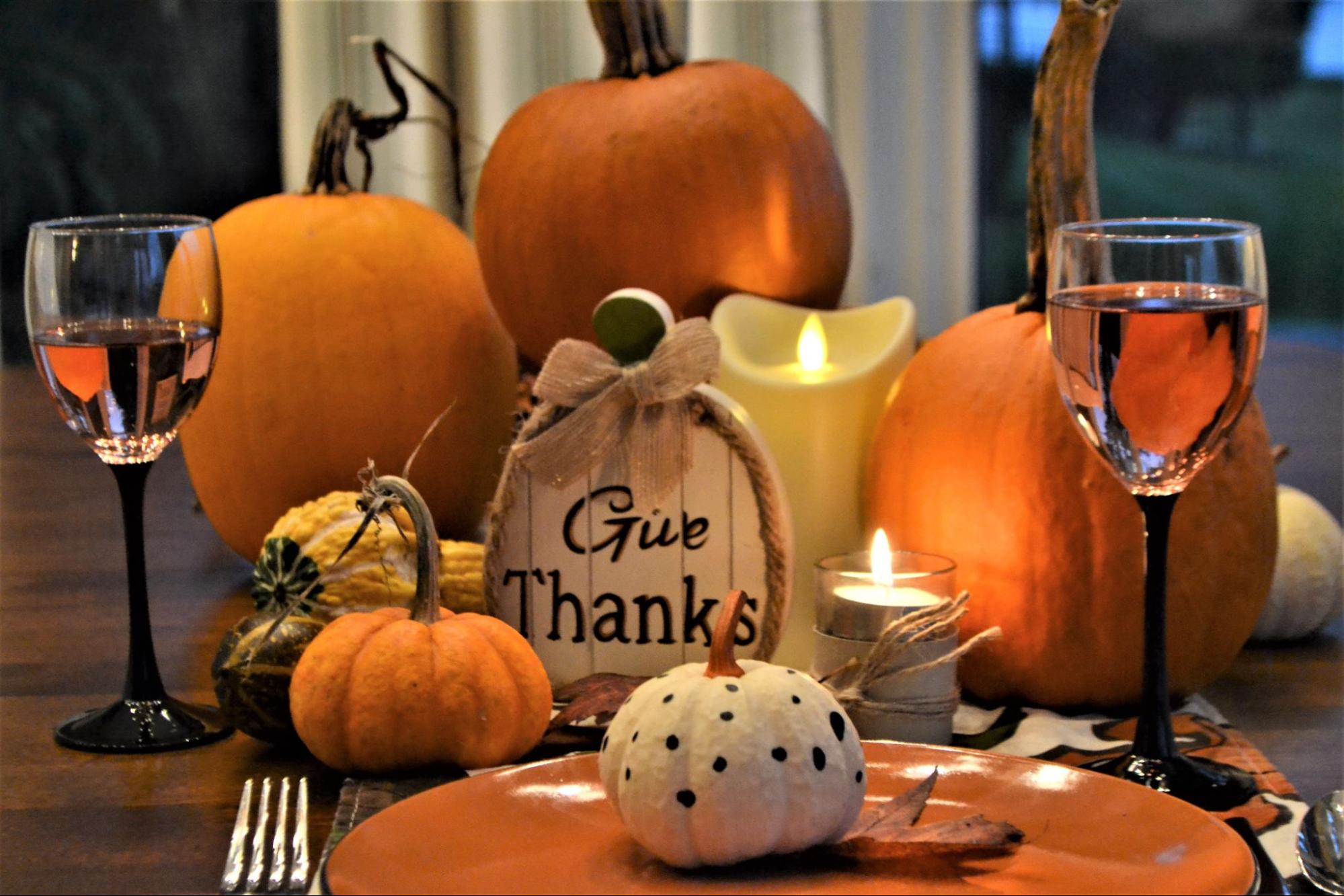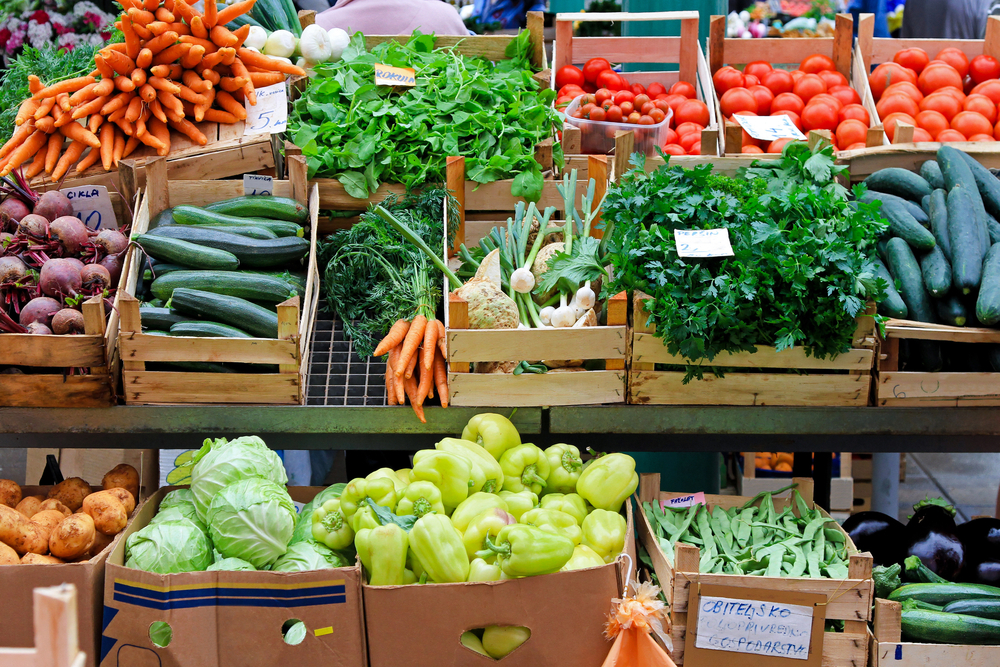
How to Have an Indoor Garden in Your Apartment

Are you wondering how to have an indoor garden in your apartment? One of the drawbacks of apartment living can be the lack of adequate outdoor space. If you have a green thumb but nowhere to begin an outdoor garden, fear not! You can still cultivate an indoor garden with the right care and resources. Whether you choose to focus on herbs, vegetables, fruit, or simply just greenery, your apartment can serve as an excellent space for indoor gardening.
Check out our complete guide for easy-to-grow indoor plants, including what you should grow in your indoor garden and tips for keeping your garden healthy and thriving.
What should you grow in your indoor garden?
Herb gardens

If you’re a beginner who’s new to indoor gardening, the best place to start is an herb garden. Whether you start with seeds or seedlings, herb gardens are relatively easy to maintain all year round and offer a number of wonderful benefits for apartment dwellers. First, they look great and smell delicious. Have some sunny windows in your kitchen? Why not spruce up a windowsill with a pot of basil or some fresh chives! Add fragrant and fresh herbs to your cooking without having to run to the store to drop extra money for just a few sprigs of mint.
When deciding which herbs to tend in your indoor garden, consider which you use most often in your cooking. Do you love Italian food? Consider basil, oregano, and rosemary. Are Mexican or Thai more your style? You’ll definitely want cilantro, parsley, or scallions.
Whatever you choose, be sure to pot your herbs with other plants that enjoy the same level of moisture. Basil, cilantro, and parsley all prefer moist soil, while rosemary, oregano, sage, and thyme can tolerate drought-like conditions. Lastly, always plant mint by itself or it will completely take over any neighbors sharing its pot.
Vegetable gardens

You might be thinking that growing vegetables inside seems impossible, but it’s actually quite easy! Many popular plants that thrive in outdoor gardens do perfectly well in containers inside, too, and are perfect for beginners. Grab some seedlings from your local greenhouse or test your green thumb and germinate some seeds from a packet or your compost pile. Whether you choose a bright windowsill or seek some help from a grow light, your vegetable garden will wow all your friends! Here are seven of our favorites:
1. Salad greens
Your favorite salad greens like arugula, spinach, chard, bibb lettuce, and mustard greens all grow super well in containers and won’t take up a ton of space on your counter or windowsill. Pick from them as needed and they’ll continue to grow all year round
If you want to elevate your dinner plate, you might also consider one of the hydroponic garden systems or an AeroGarden, as these veggies will thrive in these systems.
2. Microgreens
An overlooked but absolutely delicious addition to any dish are microgreens. These are incredibly easy to grow and are great for small apartments, as they can flourish in tight spaces quickly in even as simple a container as an aluminum tray. Microgreens are tender stems of vegetable plants that are harvested before they become too mature. They are great in salads, in sandwiches, or even in cooked dishes.
The best part about microgreens is that they are quick-growing and can be harvested in as few as 10 days! They are a great choice for beginner gardening and will even grow in your garage under a grow light. Just be sure the seeds aren’t planted too deep, as they need bright light for germination.
3. Garlic
Keep any unwanted vampires at bay by growing garlic indoors. Typically, garlic does better outside, as it requires the winter cold in order to form new cloves. Nevertheless, the scallion-like garlic scape that grows from a planted clove can be grown and harvested in your indoor garden. Elevate your stir fry or pesto, or make a fancy compound butter.
4. Radishes
If you’re ready to up your salad game, you have got to plant radishes in your indoor garden. They are quick-growing and super easy to grow indoors in a container, as they have shallow roots. Harvest them when their roots are around an inch in diameter and remember that you can eat the leaves, too!
5. Carrots
Sorry, Peter Rabbit, because these carrots are moving indoors! Like radishes, carrots are a root vegetable and do not require a ton of light to thrive. They are perfect for shady apartments but do require a deeper pot. Baby carrots will be ready for harvest in just 40 days after planting the seed. Speed up the process by picking up seedlings at your local greenhouse and start that Pinterest board for all of the delicious carrot recipes you’ll be able to make.
6. Bush beans
Another great addition to your list of indoor garden ideas are bush beans. As opposed to the pole bean, bush beans grow much better with indoor pots. Like radishes and carrots, they also do not require a ton of light, which makes them great for a variety of spaces in your home. Harvest this crop in just 60 days!
7. Micro tomatoes
If you are fortunate enough to have great sunlight in your home, you should definitely consider growing micro tomatoes in your indoor garden. Larger varieties of tomatoes need large pots and take up quite a bit of space, but micro tomato plants will produce cherry tomatoes and grow to only about 6 to 10 inches tall.
They can be potted in as small as a six-inch pot, but honestly do better if you have space for a gallon container. Just be sure they have direct sunlight. Shake the plant every now and again to pollinate the flowers and enjoy a great yield of fruit! While these micro tomato plants can start from seed, they are much easier to grow from seedlings, so inquire about them at your local greenhouse.
Fruit trees and bushes

If vegetables and herbs aren’t your cup of tea, don’t sweat it! Expand your indoor garden ideas to include fruits, too! There are a number of self-pollinating fruit trees and bushes you can cultivate indoors as well. Though they do require some more care than their vegetable counterparts, growing fruit indoors can be quite rewarding. Additionally, all fruiting trees and bushes will require plenty of direct sunlight. Still, you can supplement partial sunlight with a full-spectrum LED grow light to make up for a lack of natural sun.
Many small citrus trees like dwarf orange or Meyer lemon grow well indoors and add a splash of aromatic greenery to your home as well. While they might not produce fruit in the first year due to shock, the years following should be full of small, ripe fruits, perfect for adding some zest to your favorite dish or cocktail. Citrus trees do prefer large, deep containers and direct sunlight, so keep these needs in mind when finding their perfect home. The fruits of your labor will be worth it!
Jam out with a variety of berries like strawberries, raspberries, and blueberries, as they will also grow well in indoor containers. Berry bushes require plenty of direct sunlight, so one of the benefits of growing them indoors is their portability. Rotate the containers for a fuller plant, and if you’re able, consider moving the plants throughout the day to be sure they get plenty of natural sunlight. Of course, a grow light will also help sustain indoor berries if you have a shady apartment.
Low-light plants

If edible plants aren’t your style or you have a shady space with little natural light, there are plenty of other ways to cultivate a garden indoors. There are a number of shade-loving plants perfectly suitable for your space.
Add some vertical pizazz to your apartment, and consider a snake plant or a peace lily. Both of these houseplants will do perfectly well in low light and can grow several feet tall after a few years. They are perfect for a shady corner or rooms with only partial light. During the growing season, a peace lily will also sprout beautiful white flowers, a perfect foil to its luscious green leaves.
Have a north-facing window you’d like to spruce up? Plan on a pothos, spider plant, or hanging ivy. Shelve these beauties near the window, place them on a windowsill, or even hang them from a curtain rod. Pothos and ivy will grow long, vibrant vines while a spider plant will shoot out baby plants on long, dangling stems. All three are excellent additions for indoor gardening and propagate easily, so you can share with your friends.
Are you sharing your home with a furry friend? Before you go wild at your local greenhouse, check out our guide to the best pet-friendly plants.
Bright-light plants

If you are blessed with plenty of natural sunlight, there are a multitude of options to meet your gardening needs indoors. Just be sure to investigate the individual preference for each plant, as some can only tolerate direct sunlight in the morning as it is softer for sensitive leaves. Whether you choose soilless air plants or a towering fiddle leaf fig, you’re bound to find a light-loving specimen for your sun-drenched home.
Beginners who want to start out with just a few pots should choose succulents like jade, aloe, or echeveria as a great first plant. They require very little care and only need to be watered every other week or so. They do enjoy lots of natural light and are perfect for a lonely windowsill or sunny end table. Succulents are versatile and can grow in a terracotta pot, decorative pot, or even a terrarium, so add your own personal flair to your garden with the many beautiful plants in the succulent family.
Flowering plants like geranium, gardenia, jasmine, and hibiscus can brighten up any indoor space with greenery and colorful blooms. Each has slightly different watering needs, so break out that hydrometer and read up on their preferences when introducing these gorgeous gals to your garden. While there are many varieties of each plant, jasmine, gardenia, and geranium will also add awesome aromatics to your apartment. Choose a hibiscus, though, if strong scents will stifle your style.
Humidity-loving plants

Bring indoor gardening to your bathroom where the humidity is naturally higher due to the excess moisture from your sink, shower, or tub. Jump on the bandwagon and bring home a monstera deliciosa. Their decadent swiss-cheese-like leaves have taken over the Internet and will surely wow your friends when they duck into the loo. These green goddesses are great due to their withstanding of both bright and medium light. Water them every one to two weeks after the soil dries out and plan on a medium to large pot.
Choose one of the many species of ferns, perhaps the Boston fern, Asparagus fern, or Bird’s Nest fern, as all love humidity and can withstand the temperature fluctuations of bathrooms. In general, ferns are shade-loving plants that can grow quite large if potted correctly. They add great color and texture and are sure to liven up your bathroom.
Watch out Medusa, because a hanging philodendron will absolutely bring long, luscious locks to your bathroom garden. Similar to a pothos plant, these trailing vines love humidity and bright, indirect light. In the right conditions, their vines can grow up to 20 feet long. Use plant hooks to create a dramatic, sprawling system of vines that will captivate any bathroom guest.
Looking for more inspiration for apartment-friendly plants? Check out our blog post, “The Best Indoor Plants for Apartments.
How to take care of indoor gardens
Light for indoor gardens

Before your indoor garden ideas take over, you’ll want to consider which houseplants will thrive in the existing natural light conditions of your apartment. If you live in the northern hemisphere, west- and south-facing windows offer stronger light suitable for an herb garden, vegetables, fruits, succulents, and other hardy tropical plants. East- and north-facing windows are better for light-sensitive or low-light plants like leafy greens, microgreens, snake plants, and varieties of pothos.
Whichever you choose, be sure to research the light requirements for your indoor plants so you can be sure which ones are sun-loving and which can tolerate indirect light before you find the final home for your new house plants. Additionally, if direct light is hard to come by in your apartment, you can always consider an LED grow light to help boost lower light levels in your home. Grow lights allow you to provide more regulated “sunshine” to your plants for longer periods of time, which can help your plants survive the dark winter months.
Watering your indoor garden

In addition to proper lighting conditions, many plants have a variety of watering needs, so be sure to investigate how often they require water. Without a doubt, choosing a pot with proper drainage holes will be necessary when indoor gardening so that your plant’s roots don’t become waterlogged. Always dump out any extra water that pools in the plate beneath the pot to avoid root rot.
We recommend investing in pots that have good drainage holes, and you’ll want to be sure not to overwater your plants. Some indoor plants, like ferns, prefer to be moist all the time, while others, like succulents, enjoy drying out in between waterings. You can always regulate water levels with a hydrometer, a super useful tool that will measure moisture levels deep within the container. Lastly, minerals in your tap water can vary greatly, so a good rule of thumb for watering is to use room-temperature distilled water to avoid shocking your plants.
For forgetful beginners or those who have varying schedules, consider an indoor gardening kit with an automatic timer, an under-watering system, or a built-in self-watering mechanism. These eco-friendly garden designs are low-maintenance and a great way for the eager newbie to avoid providing excess water. Many of these devices have a time-release watering feature, so you can set it and forget it! Additionally, most hardware stores now sell high-quality hydroponic systems that allow users to maximize their small spaces, providing high yields of soilless edible plants all while conserving water.
Potting your indoor garden

It’s important to pick the right potting mix as you begin your indoor garden project. Well-draining, looser soils tend to be better for indoor plants, but you should check each plant’s individual needs before planting. Drought-tolerant plants like succulents and rosemary prefer dryer soils with more perlite to help mitigate water retention. Moisture-loving plants, on the other hand, might benefit from more vermiculite in the soil in order to retain water.
When choosing a nutrient-rich potting mix, another indoor gardening tip would be to verify that the N-P-K (nitrogen, phosphorus, and potassium) levels are adequate for your houseplants. What helps grow large, beautiful leaves on your monstera may inhibit fruit growth on your Meyer lemon tree, so it’s important for beginners to evaluate what each soil-based plant requires.
Choosing the right pots for your indoor garden is super important to ensure maximum growing potential and aesthetics. As we mentioned before, drainage holes are a must-have. Beyond that, different plants may have specific needs, so it’s best to complete a quick search to see whether your garden will thrive better in shallow pots or deep pots.
While some houseplants will thrive in smaller containers, others quickly outgrow them, so you’ll need to re-pot them to avoid your plants becoming rootbound. Additionally, if growing vegetables from seedlings, consider the maximum height and width of the mature plant. Leafy lettuces like arugula, spinach, and chard will be fine in smaller, shallow pots, but quick-growing cherry tomatoes, for example, will grow taller and wider, requiring a larger, deep pot. Collect a variety of colors, shapes, and styles for a more visually appealing garden!
Fertilizing your indoor garden

Fertilizing your garden is paramount to the success of indoor plants, as their potting soil has only a finite amount of nutrients that plants can tap into. For beginners, a slow-release fertilizer implanted in the soil can help extend the life of the potting soil and enhance plant growth. These soil inserts will also ensure you don’t over-fertilize your plants. Additionally, a more advanced gardener could try liquid fertilizers, like Miracle-Gro, but do be wary of each plant’s individual needs.
Fertilize indoor gardens in the spring, before growing season, to replenish the soil before your plants enter growth spurts and sprout back to life. Lastly, some plants will benefit from being fertilized throughout the growing season, like fiddle leaf figs, while others like Peperomia will not.
Temperature and humidity considerations for indoor gardens
Another element to consider for your indoor gardening is the temperature. Most plants in your garden will enjoy warm, humid environments with temperatures between 70 to 80 degrees Fahrenheit or 21 to 27 degrees Celsius. Some plants can withstand cooler temperatures, but many will enter their dormant phase after extended exposure to chilly conditions.
While your hair may hate it, humidity is your plants’ best friend. Aim for humidity levels somewhere between 40 percent to 60 percent in any room with plants. If you live in a dryer climate, consider investing in a humidifier or spritzing your plants a few times a day with room-temperature water. Placing several plants together will also help to increase the natural humidity among them. Alternatively, you could consider designing a terrarium with a lid to make that coffee table pop!
Time to shop!
Whether you choose to garden indoors with fruits, vegetables, flowers, or trees, there are so many wonderful houseplants to choose from to elevate your space. Select a theme, a texture, and a style, and let your indoor garden ideas bloom. Beginners and green-thumbs alike are bound to find plenty of plants suitable for a large home or small apartment. Locate your local greenhouse and let your wildest plant dreams flourish.
If you’re in the market for your next living quarters, Landing’s apartments are fully furnished and await all of your gardening endeavors! Landing offers long-term apartment stays in over 375 cities across the U.S. Check out their useful app to browse apartments, schedule your next reservation, and plan your plant’s new home!









